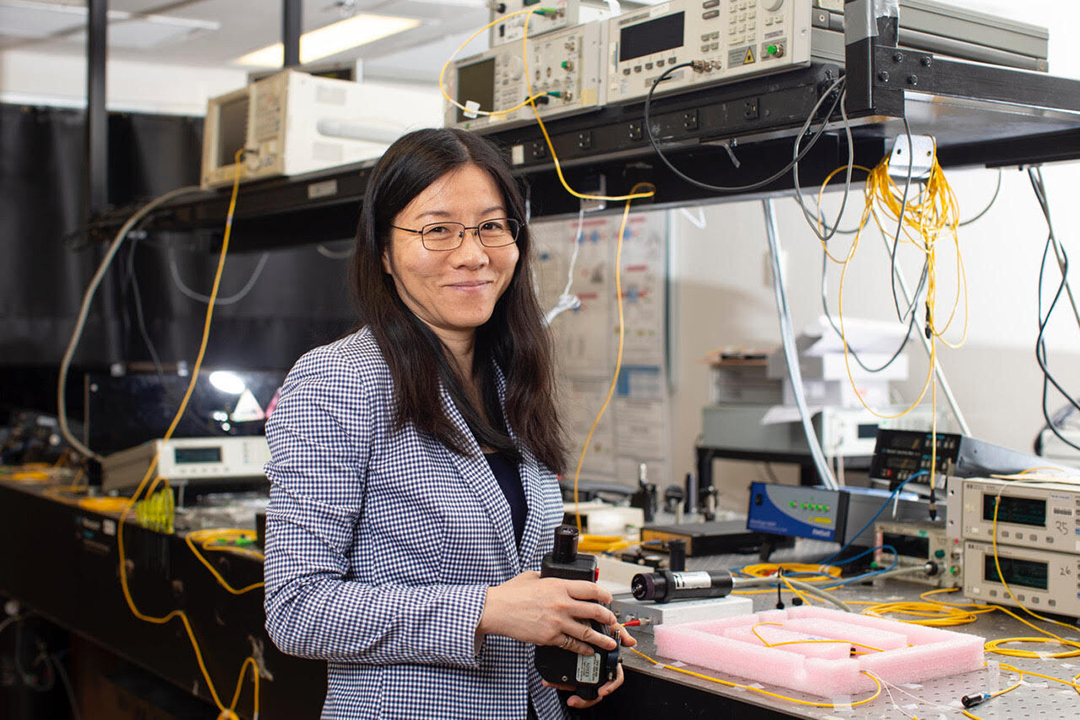Regardless of how sophisticated quantum mechanics may seem, its applications are found wherever computer chips are used — everywhere from the electronics of semiconductors to kids’ toys.
Quantum mechanics, in short, is the study of the behaviour of subatomic particles like electrons, protons, and even light particles, which are called photons. Besides its applications in performing specific and complex computations, quantum mechanics can be leveraged in communications to send information back and forth between different parties.
Professor Li Qian, a professor in the Department of Electrical & Computer Engineering at U of T, proposed a new approach to increase the efficiency of quantum communication in a recent publication in Nature Communications. In a conversation with The Varsity, Qian explained how this novel technique of quantum communication works.
What is quantum fingerprinting?
In Professor Qian’s recent study, she and her colleagues have been working on a specific communication complexity problem. Communication complexity problems are a set of problems that ask what is the minimum amount of communication needed to achieve a certain task. In this case, the task is to find out whether two parties have the exact same file or digital document.
The communications problem that quantum fingerprinting aims to deal with is simple: the first party, which we can dub Alice, and the second party, which we can dub Bob, want to determine whether their respective copies of a certain file or document are identical to the other’s copy. It’s possible for one of them to simply send their file to the other and check, but the advantage of the quantum fingerprinting method is that the same effect can be achieved by only sending a tiny bit of information — called the ‘fingerprint’ of the file. The best part is that a third party with no direct access to the files can compare the fingerprints from Alice and Bob and determine whether their files are identical or not.
Fingerprinting a one megabyte file — a file about the size of a digital photo — would regularly require the transmission of about 300 bytes. In comparison, the new quantum fingerprinting method would only require around three bytes — three letters’ worth of data. This novel approach to encoding information dramatically reduces the time, energy, and amount of data required in comparison to that required by classic methods of telecommunication.
Implications and potential applications
While comparing two files is not that exciting, the research is immensely important because of its potential applications both on macro and micro scales. Although the specific fingerprinting problem studied in Qian’s paper demonstrates the dramatic reduction of information required by quantum fingerprinting particularly well, the method could be also extended to more complex situations involving multiple users on large networks. The concept of quantum fingerprinting could also facilitate communications between microscopic networks, such as between different locations on a computer chip.
In addition, quantum fingerprinting could have applications in cryptography and secure communication technologies, which are used millions of times a day whenever anyone logs into their social media accounts, logs into online banking, or makes an online purchase. “A lot of people have worked in this field and they have shown that quantum communication can achieve the type of [data] security that classical communication cannot,” noted Qian.
Qian also added that breakthroughs in problems like these can have ripple effects. By increasing the efficiency of communication systems, we can reduce their energy consumption, which would also lead to a reduced carbon footprint.
Leveraging quantum mechanics in computing and communication is a relatively new practice, and making such applications more prevalent would require further research and the establishment of quantum communication infrastructure that is compatible with our current technology.
Another important step to promote the use of quantum communication — and quantum mechanical concepts in general — is public education. The concept of quantum mechanics is not intuitive to the general public because most people don’t encounter it on a daily basis. Qian believes that introducing concepts of quantum systems earlier on in public education will generate more interest and better intuition about this emerging field in communications research.


